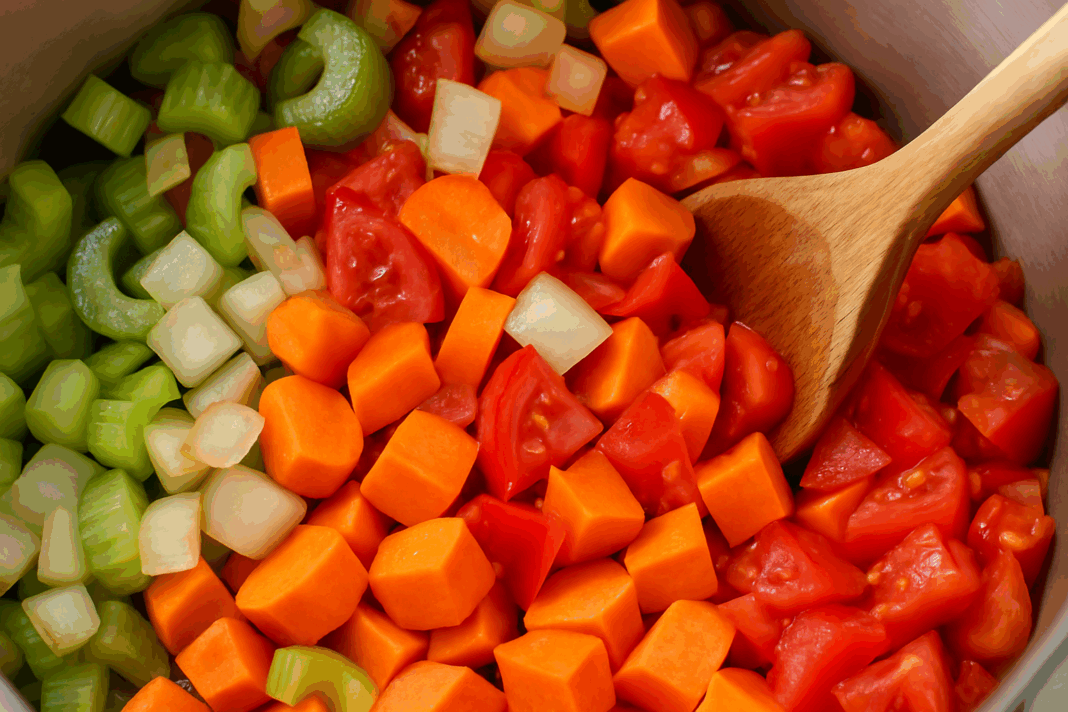Introduction: Embracing the Comfort and Health of Vegetable Soup
In today’s fast-paced world, finding nourishing meals that are both simple to prepare and genuinely satisfying can feel like a rare luxury. Amid countless dining options, vegetable soup remains a timeless staple—a comforting, wholesome dish that embodies the essence of mindful eating and nutrition. Understanding how to make the best vegetable soup can transform your meal planning routine, offering an endless array of hearty, delicious, and healthy vegetarian dinners. As we explore the art and science behind crafting the perfect vegan vegetable soup, we will uncover not only the methods but also the magic that elevates humble ingredients into soul-warming nourishment. Whether you are seeking easy homemade vegetable soup recipes, inventive vegetarian food ideas, or the best vegetarian food recipes for your family table, this guide delivers expert insights to enrich your culinary repertoire.
You may also like: Healthy Plant-Based Dinners Made Easy: Best Whole Food Plant-Based Recipes for Beginners and Beyond
Why Vegetable Soup Is a Powerhouse of Nutrition
Vegetable soup is far more than just a light starter or side dish; it is a nutritional powerhouse packed with vitamins, minerals, antioxidants, and fiber. Crafting a hearty vegetable soup allows you to embrace a wide range of nutrient-dense ingredients that support overall wellness. Root vegetables like carrots and parsnips, leafy greens such as spinach and kale, and cruciferous choices like broccoli and cauliflower all contribute unique health benefits. A bowl of the best vegetable soup offers essential nutrients like vitamin C, potassium, magnesium, and phytochemicals that help combat oxidative stress.
Moreover, for those seeking vegetarian food ideas that fit seamlessly into a healthier lifestyle, vegetable soups offer an ideal solution. The high water content helps with hydration, the fiber promotes digestive health, and the low-calorie density supports weight management. Learning how to make a veggie soup at home empowers you to customize flavors while ensuring maximum nutritional value. Choosing to enjoy soup without meat also reduces saturated fat intake, promoting heart health and aligning with plant-based dietary patterns recommended by nutrition experts.
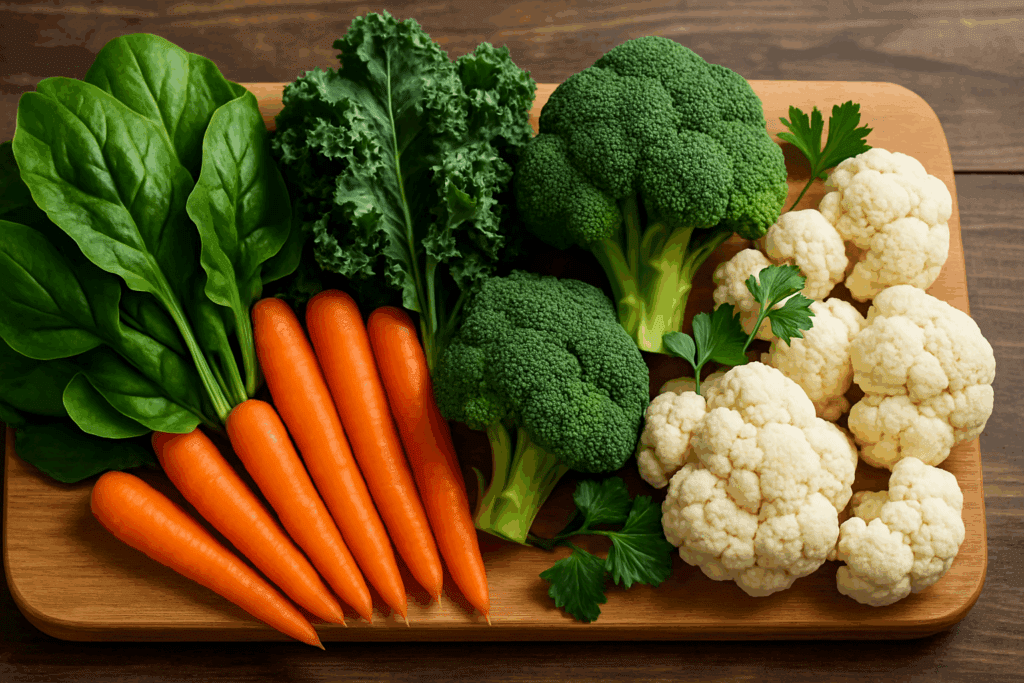
Essential Components: What Goes in Vegetable Soup
Mastering how to make the best vegetable soup begins with understanding what goes in vegetable soup to create layers of flavor and texture. At its core, vegetable soup recipes rely on a symphony of colorful vegetables, a flavorful liquid base, aromatic herbs and spices, and often legumes or grains for added heartiness.
Start by selecting a vibrant assortment of fresh vegetables. Stalwarts like onions, carrots, and celery form the traditional “mirepoix,” providing a savory foundation. From there, add seasonal produce such as zucchini, tomatoes, green beans, sweet potatoes, or corn to enhance both taste and nutrition. Incorporating protein-rich ingredients like lentils, chickpeas, or beans transforms simple easy vegetarian soups into complete, satisfying meals.
The broth—whether vegetable-based or crafted from scratch—plays a crucial role in defining the character of your soup. Rich homemade vegetable broths simmered with garlic, bay leaves, and peppercorns elevate the final product. Understanding how to make homemade vegetable soup that is both flavorful and healthful involves carefully seasoning and tasting throughout the cooking process. Balancing acidity with a splash of vinegar or lemon juice can brighten flavors, while a touch of miso or nutritional yeast adds umami depth to vegan veggie soup creations.
The Art and Science of How to Make the Best Vegetable Soup
Perfecting how to make the best vegetable soup requires attention to detail, patience, and an appreciation for layering flavors. Begin by gently sautéing aromatic vegetables like onions, garlic, carrots, and celery in olive oil to develop a rich, savory base. Taking the time to caramelize these ingredients enhances their natural sweetness and lays the groundwork for a deeply flavorful soup.
Next, gradually build the body of the soup by adding hearty vegetables and simmering them in a seasoned broth. Achieving the ideal texture is critical; vegetables should be tender but not mushy. A good practice when learning how to make vegetable soup recipe masterpieces is to stagger ingredient additions based on their cooking times. Root vegetables and legumes require longer simmering, while delicate greens and herbs should be added closer to the end to preserve their freshness.
Crafting an awesome vegetable soup recipe often means experimenting with spices and flavor profiles. Common herbs like thyme, rosemary, and bay leaf lend classic notes, while international influences—such as turmeric, ginger, or cumin—can create vibrant twists. Mastering how to cook veg soup that bursts with flavor also involves seasoning with salt in stages and finishing with a touch of acid or a sprinkle of fresh herbs.
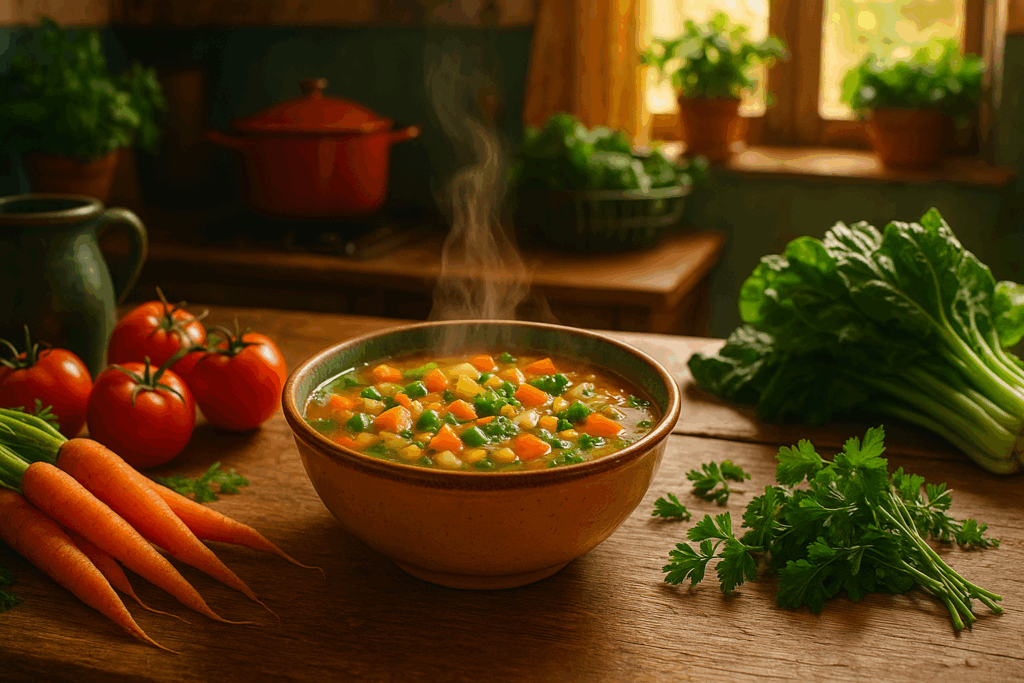
Exploring Flavor Variations: From Rustic to Global Inspirations
While classic vegetable soups hold timeless appeal, the beauty of easy vegetarian soup recipes lies in their versatility. Global cuisines offer endless inspiration for creating distinctive dinners for vegetarian enthusiasts. For example, Mediterranean vegetable soups often feature chickpeas, olives, and basil, while Indian-style vegan veggie soup might incorporate curry spices, coconut milk, and lentils.
Adding grains such as quinoa, barley, or brown rice can enhance both the texture and nutritional content of hearty vegetable soup recipes. These elements not only create more substantial meals but also offer sustained energy thanks to their complex carbohydrates and fiber. For an Asian twist, consider including miso, bok choy, tofu, and a dash of soy sauce, resulting in an umami-rich vegan vegetable soup perfect for cooler evenings.
Learning what to put in vegetable soup also means appreciating balance. Incorporating contrasting textures—such as tender vegetables alongside crunchy garnishes like toasted seeds or croutons—adds sophistication. Flavor layering and mindful ingredient selection ensure that even easy homemade vegetable soup can deliver extraordinary dining experiences that honor diverse culinary traditions.
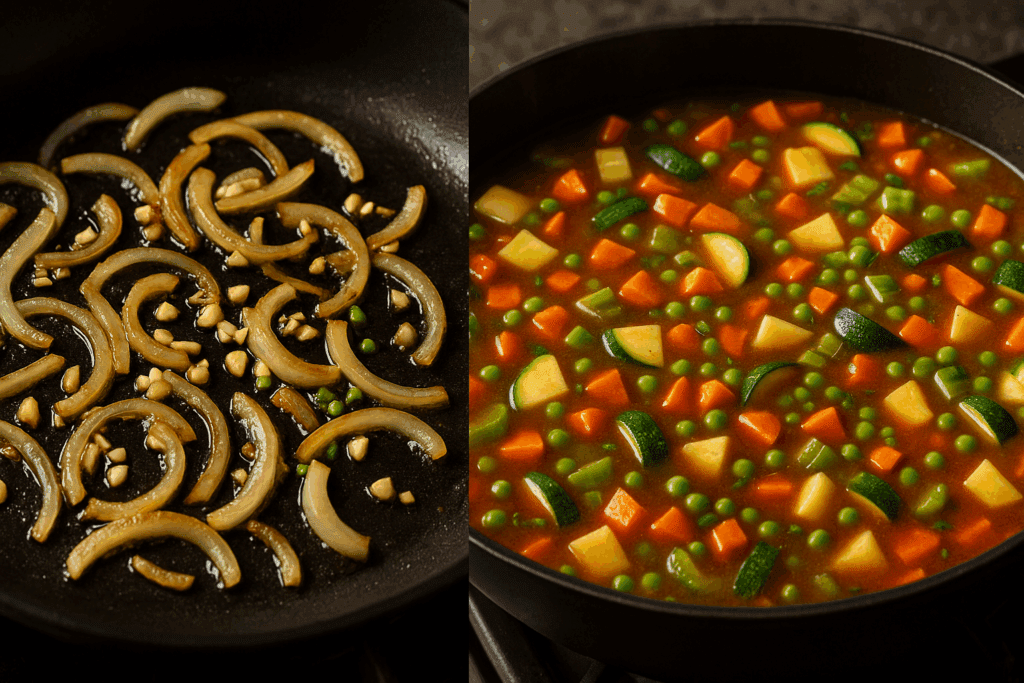
Easy Homemade Vegetable Soup: Techniques for Success
Creating easy homemade vegetable soup does not require professional chef skills, but it does benefit from thoughtful preparation and high-quality ingredients. Starting with fresh, in-season produce ensures vibrant flavors and optimal nutrition. Washing, peeling, and uniformly chopping vegetables promotes even cooking and a visually appealing presentation.
Using a heavy-bottomed pot or Dutch oven helps distribute heat evenly, minimizing the risk of scorching. When learning how do you make vegetable soup effectively, maintaining a gentle simmer rather than a vigorous boil preserves the integrity of delicate vegetables. Skimming any foam or impurities that rise during cooking enhances the clarity and taste of your broth.
Furthermore, seasoning thoughtfully throughout the cooking process—rather than relying solely on a final salt adjustment—builds nuanced depth. Understanding how to cook veg soup to perfection also involves letting the flavors meld. Allowing your soup to rest, covered, for a short period after cooking intensifies its richness. These small but significant techniques elevate an easy vegetarian soup recipe from merely good to truly memorable.
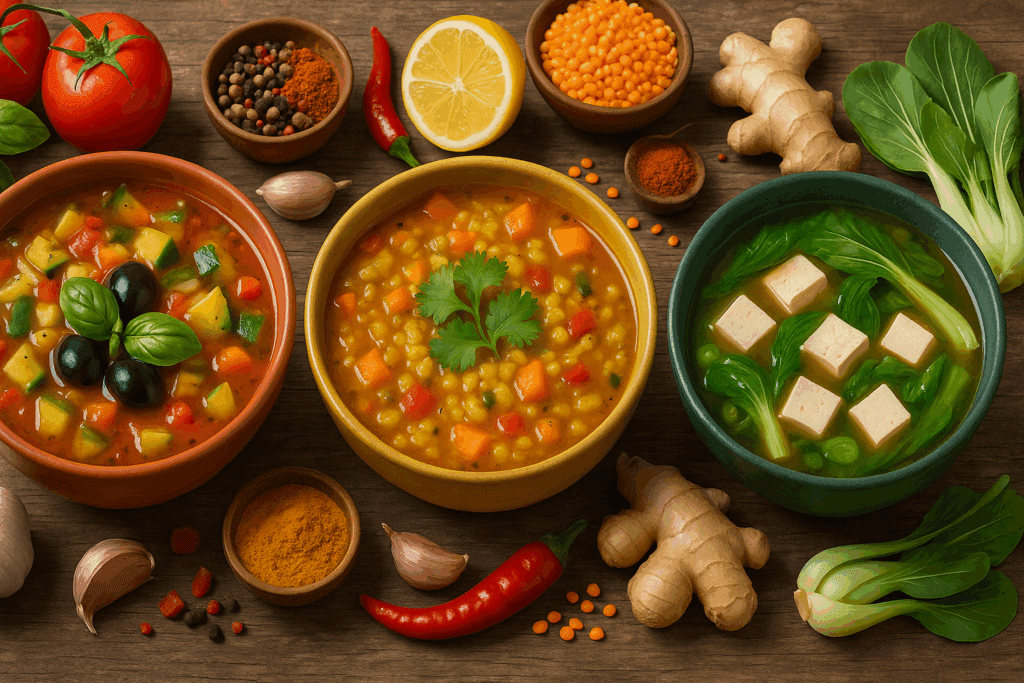
Hearty Vegetable Soup for Every Occasion
One of the enduring strengths of hearty vegetable soup is its remarkable adaptability to different seasons, occasions, and dietary needs. A light spring vegetable soup brimming with peas, asparagus, and leeks captures the essence of renewal, while a thick, robust autumnal version featuring squash, beans, and barley offers comforting warmth.
For those wondering what to make for dinner vegetarian-style during busy workweeks, preparing a large batch of hearty vegetable soup provides ready-to-eat meals packed with nourishment. Soups freeze beautifully, retaining their texture and flavor when properly stored. Incorporating a variety of legumes or grains in your awesome vegetable soup recipe ensures satisfying, balanced nutrition that can serve as a complete meal.
Moreover, entertaining guests with bowls of colorful, vibrant vegan veggie soup allows you to showcase the beauty of plant-based cuisine. Garnishing with fresh herbs, a swirl of pesto, or a sprinkle of nutritional yeast adds an elegant finishing touch that transforms humble ingredients into gourmet fare.
What to Put in Vegetable Soup: Creative Additions
While traditional vegetable soups rely on familiar staples, knowing what to put in vegetable soup to create extraordinary variations is key to avoiding repetition. Roasted vegetables, such as caramelized butternut squash or blistered cherry tomatoes, lend concentrated flavor notes that elevate the dish. Blending a portion of the soup and stirring it back in creates a creamy texture without the need for dairy, keeping the dish fully plant-based.
Incorporating unconventional ingredients like fennel, celeriac, or seaweed offers intriguing flavor dimensions and enhanced nutritional profiles. A small addition of tamari or liquid smoke can bring subtle complexity to vegan vegetable soup without overpowering delicate vegetable flavors. Exploring these creative touches empowers home cooks to discover how to make a great vegetable soup that feels both familiar and exciting.
Ultimately, whether your goal is to master easy vegetarian soups or explore best vegetarian soups renowned for their depth and sophistication, creativity and a willingness to experiment are your greatest allies. Each new ingredient offers an opportunity to tailor your soup to the season, the occasion, and your personal taste preferences.
How to Make a Good Vegetable Soup: Tips from Culinary Experts
Professional chefs often emphasize that knowing how to make a good vegetable soup involves more than just following a recipe. It requires attentive tasting, respect for ingredient quality, and a commitment to seasoning at every stage. Choosing the best vegetable soup recipe for your needs also depends on understanding the role of each component, from the starchiness of potatoes to the sweetness of carrots and the earthiness of mushrooms.
Expert tips include using acid strategically to brighten flavors—a splash of vinegar, a squeeze of lemon, or a spoonful of tomato paste can work wonders. Incorporating a variety of cooking techniques, such as roasting or grilling vegetables before adding them to the soup, brings deeper, smokier flavors that elevate easy vegetarian soups beyond the ordinary.
Furthermore, patience is crucial. Allowing the soup to simmer gently, tasting and adjusting seasoning gradually, ensures that each spoonful offers a harmonious balance. Whether learning how to make soup vegetarian from scratch or adapting beloved family recipes, these principles foster a deeper appreciation for the artistry involved in crafting exceptional vegetable soups.
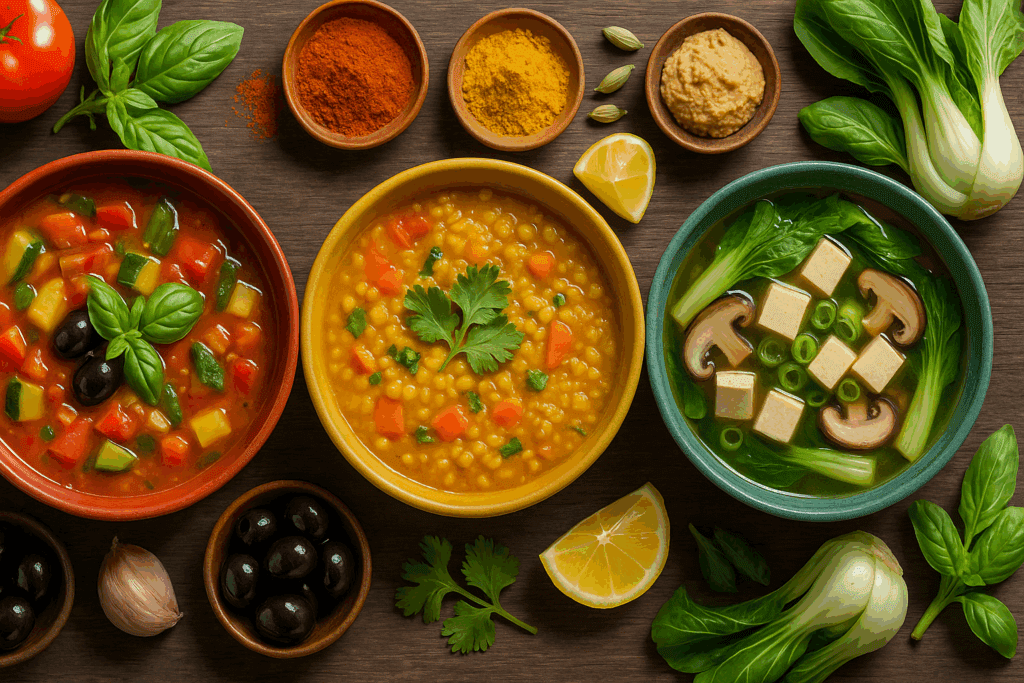
FAQ: How to Make the Best Vegetable Soup – Fresh Insights and Practical Tips
What are some unexpected ingredients that can elevate vegan vegetable soup?
While classic ingredients form the backbone of vegan vegetable soup, exploring lesser-known additions can truly transform its flavor profile. For example, adding a spoonful of tahini can introduce a rich, nutty creaminess without any dairy. Roasted poblano peppers lend a subtle smokiness that pairs beautifully with earthy vegetables. Sea vegetables like dulse flakes infuse easy vegetarian soups with natural umami, enhancing their savory depth. When thinking about what to put in vegetable soup, don’t overlook dried porcini mushrooms—their intense flavor can create an awesome vegetable soup recipe that surprises and delights.
How do I create a hearty vegetable soup that maintains vibrant textures?
Achieving a hearty vegetable soup without ending up with a pot of mushy vegetables requires strategic layering. Start by adding firm, slow-cooking vegetables such as carrots and potatoes first, allowing them time to soften without disintegrating. Then, as you continue making easy homemade vegetable soup, incorporate tender vegetables like zucchini and spinach toward the end of the cooking process. Stirring in cooked grains or beans at the very last stage ensures they retain their integrity. This approach ensures every spoonful of your best vegetable soup offers an exciting interplay of textures and flavors.
Can vegetable soup recipes be adapted for special diets like low-sodium or keto?
Absolutely—one of the best features of vegetable soup recipes is their adaptability. For a low-sodium option, opt for homemade broths without added salt and rely on natural flavor enhancers like garlic, onion, and fresh herbs. For those interested in keto-friendly easy vegetarian soups, focus on non-starchy vegetables like kale, cauliflower, and mushrooms, avoiding higher-carb options like corn or potatoes. Swapping in coconut cream or almond milk can add luxurious body without spiking carb counts. Customizing what goes in vegetable soup allows you to meet specific health goals without sacrificing flavor or satisfaction.
What role does seasoning play in crafting the best vegetarian soups?
Seasoning is the soul of best vegetarian soups, transforming simple ingredients into layered culinary experiences. Salt and pepper lay the groundwork, but the magic happens with the addition of fresh herbs, ground spices, and acidifiers like lemon juice or vinegar. Knowing how to cook veg soup with gradual seasoning helps avoid over-salting while encouraging flavor complexity. A dash of smoked paprika or cumin can lend an exciting twist to easy vegetarian soup recipes without overwhelming the vegetables’ natural tastes. Thoughtful seasoning elevates easy homemade vegetable soup into a masterpiece of balanced flavors.
How can I store and reheat vegan veggie soup without losing flavor and texture?
Proper storage ensures that your vegan veggie soup remains delicious and safe to eat. Always allow the soup to cool completely before transferring it to airtight containers. Refrigerated vegan vegetable soup will last up to five days, while freezing portions in airtight bags can preserve its freshness for up to three months. When reheating, bring the soup to a gentle simmer rather than a rapid boil, which can break down delicate vegetables. Stirring occasionally during reheating ensures even distribution of flavors, keeping your hearty vegetable soup tasting just as satisfying as when it was first made.
What are the best vegetables to include when learning how to make a great vegetable soup?
Choosing the right vegetables is crucial when learning how to make a great vegetable soup. Sturdy vegetables like carrots, celery, onions, and potatoes form a dependable foundation, offering sweetness and body. To enhance nutritional value and add bursts of color, consider leafy greens like Swiss chard, broccoli florets, or peas. Less conventional additions like fennel, parsnips, or turnips can provide complexity to your best vegetable soup recipe. Selecting a variety of textures and flavors ensures that every bowl of your easy vegetarian soups is exciting, balanced, and nourishing.
What are some tips for making easy vegetarian soups taste rich without using cream?
If you want your easy vegetarian soups to taste rich and luxurious without dairy, layering flavors is key. Begin by deeply caramelizing onions or leeks to create a sweet, savory base. Incorporating pureed white beans or cashews can lend creaminess when blended into the broth, enhancing your easy homemade vegetable soup. Adding a splash of full-fat coconut milk or almond milk at the end of cooking can mimic the silkiness traditionally achieved with cream. Focusing on umami-rich ingredients like miso, soy sauce, or nutritional yeast will ensure your dinners for vegetarian lifestyles remain both hearty and deeply satisfying.
How do I balance flavors when learning how to make a good vegetable soup at home?
Balancing flavors is an essential skill when you learn how to make a good vegetable soup. Aim for a harmonious blend of sweet, salty, sour, and umami elements. Sweetness can come from slow-cooked carrots or roasted sweet potatoes, while sourness can be introduced with a squeeze of lemon or a splash of apple cider vinegar. Salt and umami are enhanced with high-quality vegetable broth, miso, or even a small dash of tamari. Continuously tasting and adjusting as you cook will help you create the best vegetarian food recipes that consistently deliver memorable, mouthwatering results.
Are there time-saving strategies for preparing dinners for vegetarian meals based on vegetable soups?
Absolutely—batch cooking is an invaluable strategy when preparing dinners for vegetarian lifestyles centered around soups. Spend a weekend afternoon making a large batch of hearty vegetable soup and portion it into individual servings for quick meals throughout the week. You can also pre-chop and freeze vegetable blends specific to your favorite vegetable soup recipes, allowing for nearly effortless soup assembly later. Instant Pots and slow cookers offer additional convenience, enabling you to set and forget while creating easy vegetarian soup recipes with minimal effort. By organizing your kitchen this way, knowing what to make for dinner vegetarian-style becomes a stress-free pleasure.
How can I make easy vegetarian soup recipes more exciting for kids and picky eaters?
Engaging picky eaters with easy vegetarian soup recipes often requires a little creativity. Try pureeing part or all of the soup to create a smooth, creamy texture that’s more appealing to young palates. Presenting the soup in colorful bowls and offering a range of fun toppings—such as shredded cheese, crunchy croutons, or avocado slices—can encourage kids to customize their bowls. Incorporating familiar flavors, such as mild tomato or sweet corn, can make vegan vegetable soup feel more accessible. The key to winning over selective eaters lies in making the experience interactive and playful while ensuring the soups still meet the standards of best vegetarian soups.

Conclusion: Why Vegetable Soup Belongs in Every Healthy Kitchen
Understanding how to make the best vegetable soup is an invaluable skill that supports a healthy, sustainable lifestyle rooted in mindful eating and nutrition. From its unmatched nutritional benefits to its boundless flavor possibilities, vegetable soup epitomizes wholesome comfort food. Mastering easy homemade vegetable soup techniques empowers you to create dinners for vegetarian palates that are both hearty and satisfying.
Whether you are exploring what can I make for dinner vegetarian-style, seeking best vegetarian food recipes for your weekly menu, or simply craving a soul-warming meal, vegetable soup offers a nourishing solution. Perfecting how to make a veggie soup at home fosters creativity, health consciousness, and culinary confidence. As you embrace the possibilities—from the best vegetarian soups brimming with legumes to vibrant vegan vegetable soup enriched with global spices—you deepen your connection to the simple, profound joy of cooking and sharing nourishing meals.
In a world filled with fast food and fleeting trends, investing time in learning how to make homemade vegetable soup reconnects us with the enduring power of real, whole foods. It reminds us that some of the best pleasures in life are also the simplest: a steaming bowl of awesome vegetable soup, a table shared with loved ones, and the knowledge that we are nourishing our bodies and spirits with every bite.

